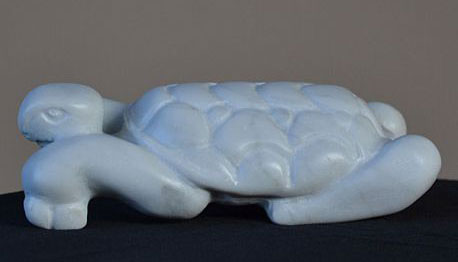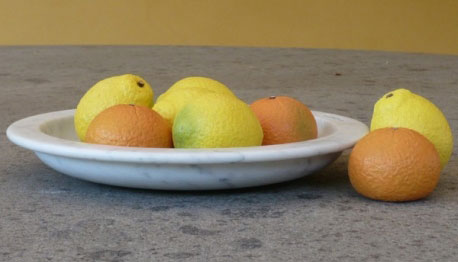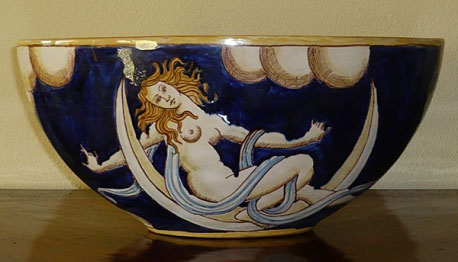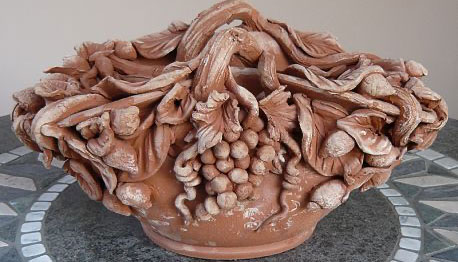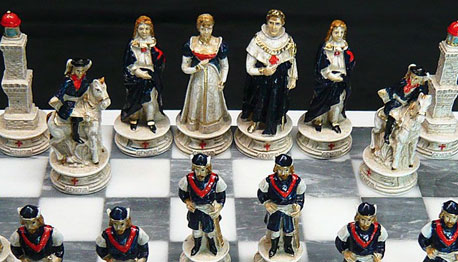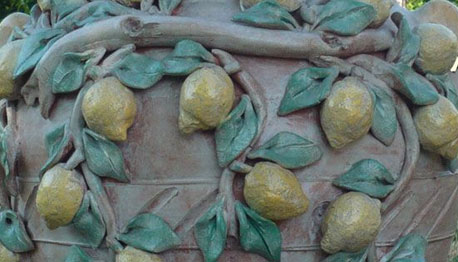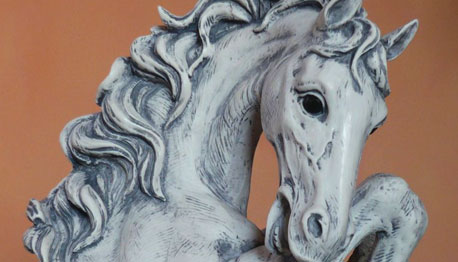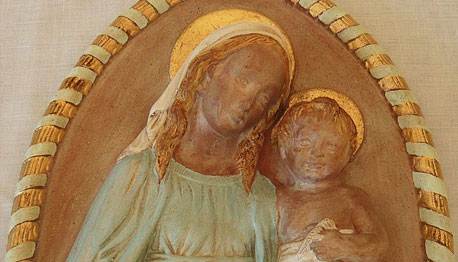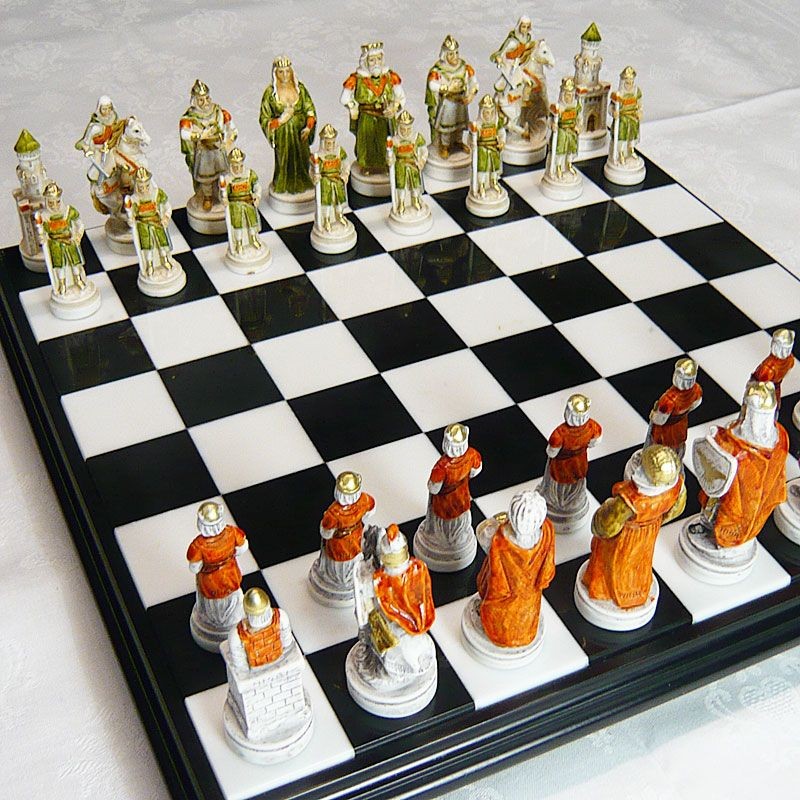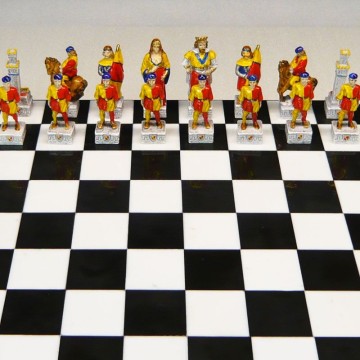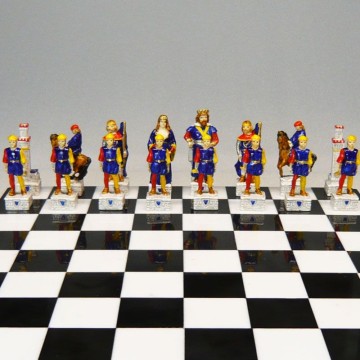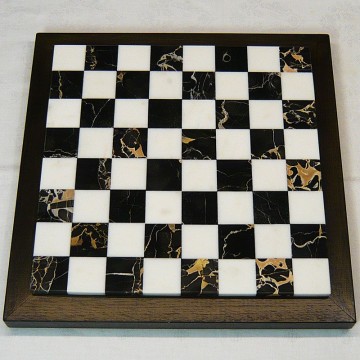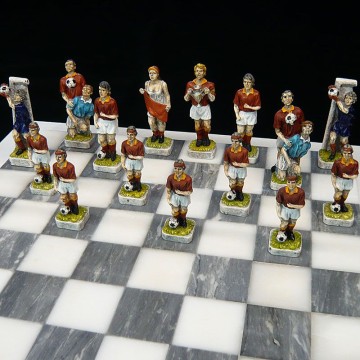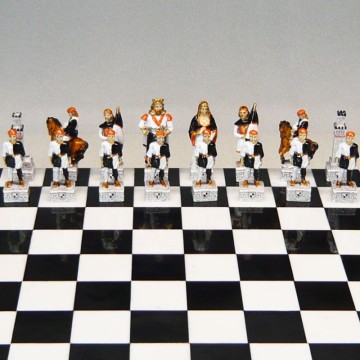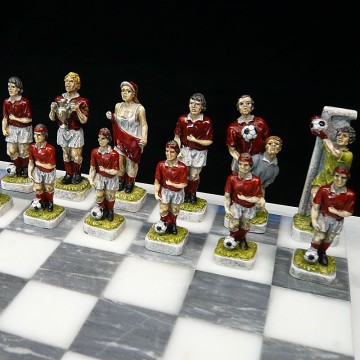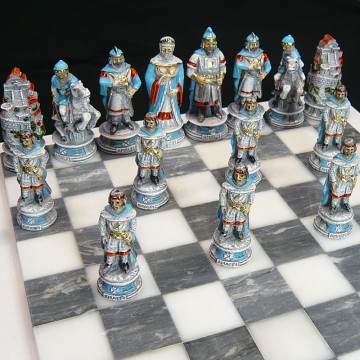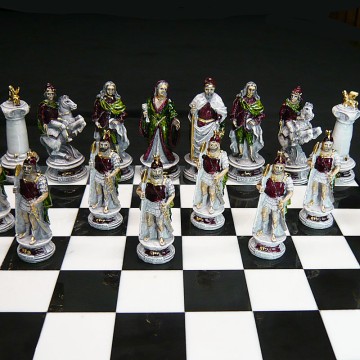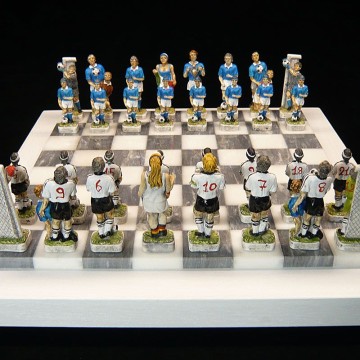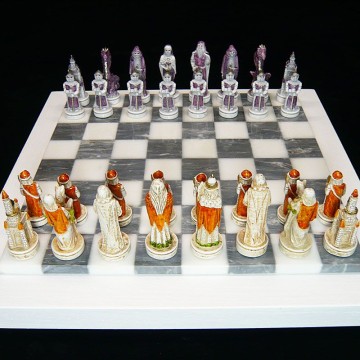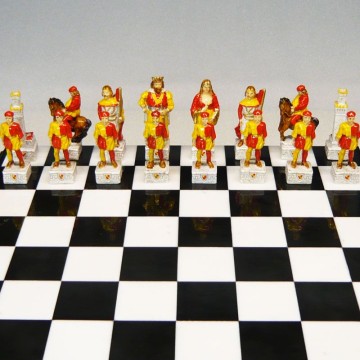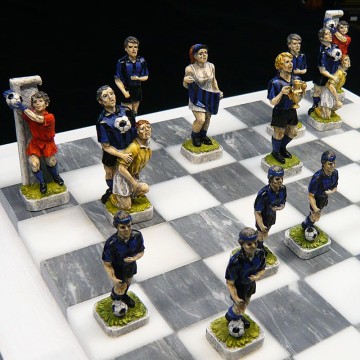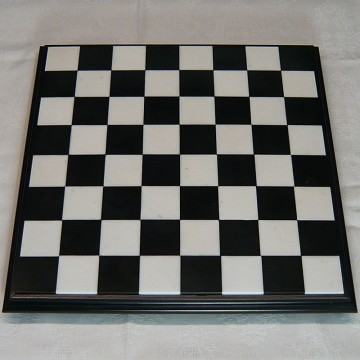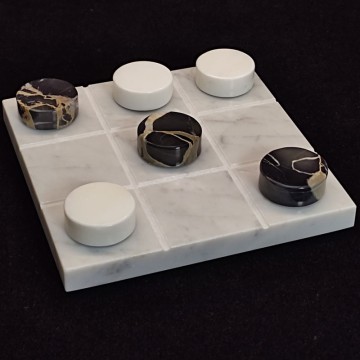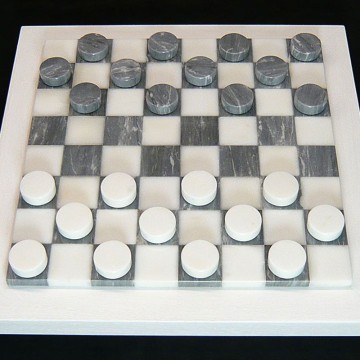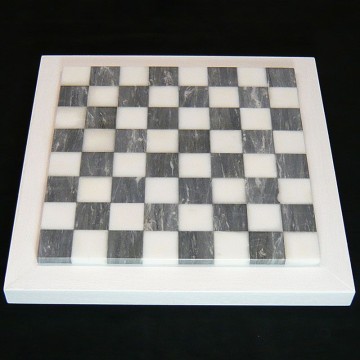Chess "The Court of King Arthur"
Reference: NSSCCRA
Set of 32 pieces ( 16 + 16 )
Artistic creation in recomposed marble, handmade and hand-painted by master craftsmen
 Security policies
Security policies
Transactions on PayPal secure server
 Terms and Conditions
Terms and Conditions
Read our term and conditions
The raw material, marble dust from the quarries of Carrara, combined with the long experience of master craftsmen and highly professional designers, is what makes these artistic creations (statues, small animals, chess) unique: original and high level subjects to be proposed to fans and collectors.
The chess. Artistic creation composed by 32 pieces made with marble dust from the quarries of Carrara, aged and hand-painted with rich details by skilled masters of art.
They reproduce historical, art and fantasy figures, creating an extraordinary atmosphere that immerses players in a dense backdrop of realism.
Chess is a two-player strategy board game played on a checkered board with 64 squares arranged in an 8×8 square grid. Played by millions of people worldwide, chess is believed to be derived from the Indian game chaturanga sometime before the 7th century. Chaturanga is also the likely ancestor of the East Asian strategy games xianggi (Chinese chess), janggi (Korean chess), and shogi (Japanese chess). Chess reached Europe via Persia and Arabia by the 9th century, due to the Umayyad conquest of Hispania. The queen and bishop assumed their current powers in Spain in the late 15th century, and the modern rules were standardized in the 19th century.
Play involves no hidden information. Each player begins with 16 pieces: one king, one queen, two rooks, two knights, two bishops and eight pawns. Each piece type moves differently, with the most powerful being the queen and the least powerful the pawn. The objective is to checkmate the opponent's king by placing it under an inescapable threat of capture. To this end, a player's pieces are used to attack and capture the opponent's pieces, while supporting one another. During the game, play typically involves exchanging pieces for the opponent's similar pieces, and finding and engineering opportunities to trade advantageously or to get a better position. In addition to checkmate, a player wins the game if the opponent resigns, or in a timed game, runs out of time. There are also several ways a game can end in a draw.
King Arthur (Welsh: Brenin Arthur, Cornish: Arthur Gernow, Breton: Roue Arzhur) was a legendary British leader who, according to medieval histories and romances, led the defence of Britain against Saxon invaders in the late 5th and early 6th centuries. The details of Arthur's story are mainly composed of folklore and literary invention, and modern historians generally agree that he is unhistorical. The sparse historical background of Arthur is gleaned from various sources, including the AnnalesCambriae, the Historia Brittonum, and the writings of Gildas. Arthur's name also occurs in early poetic sources such as Y Gododdin.
Arthur is a central figure in the legends making up the Matter of Britain. The legendary Arthur developed as a figure of international interest largely through the popularity of Geoffrey of Monmouth's fanciful and imaginative 12th-century HistoriaRegum Britanniae (History of the Kings of Britain). In some Welsh and Breton tales and poems that date from before this work, Arthur appears either as a great warrior defending Britain from human and supernatural enemies or as a magical figure of folklore, sometimes associated with the Welsh otherworld Annwn. How much of Geoffrey's Historia (completed in 1138) was adapted from such earlier sources, rather than invented by Geoffrey himself, is unknown.
Although the themes, events and characters of the Arthurian legend varied widely from text to text, and there is no one canonical version, Geoffrey's version of events often served as the starting point for later stories. Geoffrey depicted Arthur as a king of Britain who defeated the Saxons and established a vast empire. Many elements and incidents that are now an integral part of the Arthurian story appear in Geoffrey's Historia, including Arthur's father Uther Pendragon, the magician Merlin, Arthur's wife Guinevere, the sword Excalibur, Arthur's conception at Tintagel, his final battle against Mordred at Camlann, and final rest in Avalon.
The 12th-century French writer Chrétien de Troyes, who added Lancelot and the HolyGrail to the story, began the genre of Arthurian romance that became a significant strand of medieval literature. In these French stories, the narrative focus often shifts from King Arthur himself to other characters, such as various Knights of the RoundTable. Arthurian literature thrived during the Middle Ages but waned in the centuries that followed until it experienced a major resurgence in the 19th century. In the 21st century, the legend continues to have prominence, not only in literature but also in adaptations for theatre, film, television, comics and other media.
Data sheet
- Code
- NSSCCRA
- Size
- h. cm. 6 ~ 8 (every chess is made unique by little irregularities of shape and colour)

